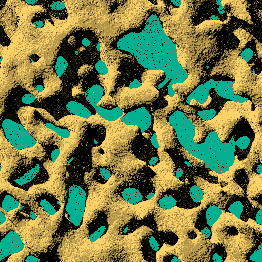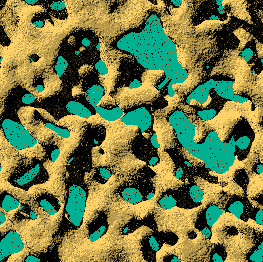

The process of collecting light can be executed for two distinct observer angles, yielding a stereoscopic pair. True stereopsis is invaluable in the interpretation of complex images, and in delicate manipulation tasks such as surgery. The left and right images can be sent to the corresponding eyes by a variety of devices: two separate monitors or monitor windows, viewed through a mirror-and-lens arrangement (see illustration below); time-multiplexed monitor, viewed through synchronously shuttered glasses; complementarily polarized images, viewed through polarizing glasses; anaglyphic pair (red and blue images), viewed through complementary color filters (see illustration on opposite page). CAM-8 easily supports any of these display techniques.